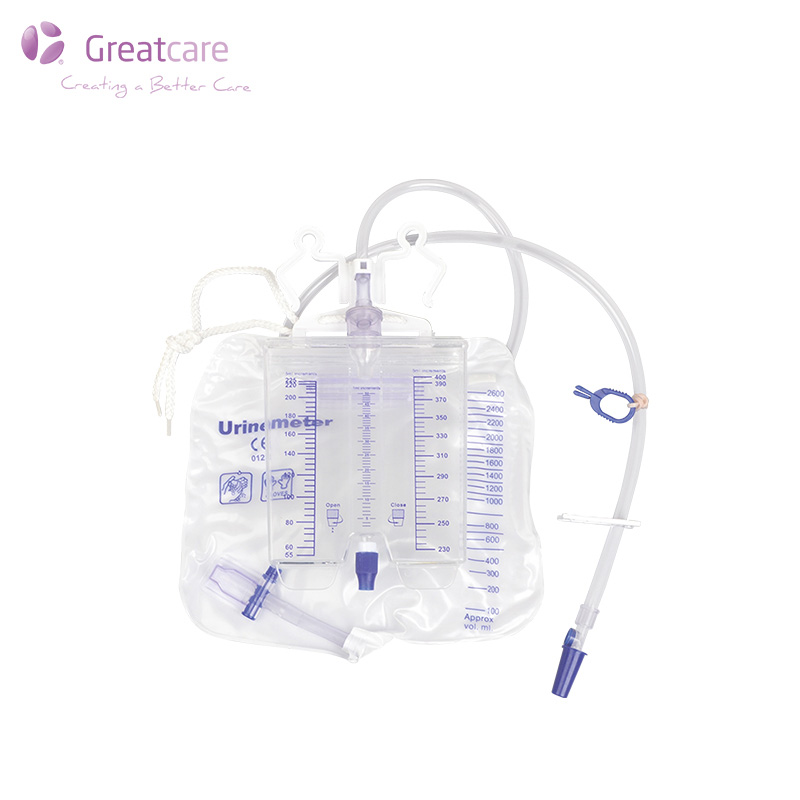Understanding the Importance of Urine Bags in Healthcare
2025-03-28
Urine bags, also known as urinary collection bags, are essential medical devices widely used in healthcare settings. They provide a convenient and effective way to collect urine from patients who may have difficulty using the restroom due to medical conditions, surgeries, or physical limitations. These bags play a crucial role in patient care, ensuring comfort, hygiene, and accurate monitoring of urine output. In this blog, we will explore the different types of urine bags, their uses, and the benefits they offer in healthcare settings.
What Are Urine Bags?
A urine bag is a disposable or reusable medical device used to collect urine from individuals who cannot urinate normally due to illness, injury, or surgery. They are typically connected to the urinary system via a catheter or a stoma and are used to manage urinary incontinence, retain urine after surgery, or monitor urine output for medical purposes. Urine bags come in various sizes and designs to accommodate different patient needs and are commonly used in hospitals, nursing homes, and even at home for individuals with mobility issues.
Types of Urine Bags
1. Leg Bags
Leg bags are small urine bags that are worn on the leg, typically strapped to the thigh. They are commonly used for patients who have an indwelling catheter. These bags are discreet, allowing the wearer to move around comfortably, making them ideal for active individuals or those who need to go about their daily activities. Leg bags come with a drainage valve to prevent leakage and can be emptied when needed.
2. Night Bags
Night bags are larger urine collection bags designed to be used while the patient is lying down, often during the night. These bags are usually connected to a catheter and are meant to hold larger volumes of urine. Night bags are typically attached to the side of the bed or positioned on the floor, ensuring that the patient can sleep comfortably without worrying about the bag becoming too full.
3. Single-Use Urine Bags
Single-use urine bags are designed for one-time use only. These are ideal for situations where cleanliness and hygiene are critical. Once the bag has been filled, it is safely disposed of, minimizing the risk of infection or contamination. These bags are commonly used in emergency situations, for patients undergoing medical tests, or for those who may not require a long-term solution for urine collection.
4. Reusable Urine Bags
Reusable urine bags are made from durable materials and can be cleaned and sterilized for multiple uses. These bags are typically used in healthcare facilities for patients who require long-term urine collection. Reusable bags are more cost-effective in the long term compared to single-use bags, but they require proper maintenance and cleaning to ensure hygiene and prevent infection.
Benefits of Urine Bags
1. Improved Comfort
For patients who are bedridden or have mobility issues, urine bags provide a comfortable and convenient solution for urinary drainage. They help eliminate the need for frequent trips to the bathroom, allowing patients to rest without worrying about their urinary needs. This level of comfort is particularly important for individuals recovering from surgery or experiencing chronic conditions.
2. Hygiene and Infection Prevention
Urine bags play a vital role in maintaining hygiene and preventing urinary tract infections (UTIs). When used correctly, these bags provide a clean and safe method of urine collection, preventing accidents and spills that can lead to contamination. Additionally, some urine bags are equipped with anti-reflux valves to reduce the risk of urine flowing back into the bladder, further preventing infections.
3. Accurate Monitoring of Urine Output
In many medical situations, monitoring urine output is critical for assessing a patient's health status. Urine bags make it easier for healthcare professionals to track the amount of urine being produced, which can provide valuable information about the patient's kidney function, hydration status, and overall health. Accurate monitoring is especially important for patients undergoing surgery, those with kidney disease, or individuals in critical care.
4. Convenience and Portability
Urine bags are designed to be portable, making them an ideal solution for patients who need to manage their urine output while on the go. For example, patients who are traveling or attending appointments can use a leg bag without needing to find a restroom frequently. The discreet nature of these bags helps patients maintain their dignity and privacy while ensuring they are always prepared for any situation.
5. Support for Incontinence Management
Urinary incontinence is a common condition, particularly among the elderly, but it can affect individuals of all ages. Urine bags provide a reliable and discreet solution for managing incontinence, allowing individuals to carry out their daily activities without the fear of accidents. The bags are designed to hold various amounts of urine, providing flexibility for different needs.
How to Use Urine Bags Safely
To ensure the safe and effective use of urine bags, it is important to follow certain guidelines:
1. Proper Placement: Ensure that the urine bag is positioned below the level of the bladder to prevent backflow of urine. This helps reduce the risk of infections and ensures efficient drainage.
2. Regular Emptying: The urine bag should be emptied regularly to prevent overfilling, which can lead to leakage and discomfort. Patients or caregivers should monitor the bag and empty it when necessary.
3. Cleanliness and Hygiene: Urine bags should be cleaned regularly to prevent infections. Reusable bags should be thoroughly washed and sterilized according to manufacturer instructions. Single-use bags should be disposed of safely after use.
4. Monitoring: Healthcare providers should monitor the patient’s urine output to ensure that the bag is functioning correctly and that there are no signs of complications, such as infection or blockage.
5. Avoiding Kinks: The tubing connected to the urine bag should be checked to ensure there are no kinks or blockages that could obstruct urine flow.
Conclusion
Urine bags are an invaluable tool in modern healthcare, providing comfort, hygiene, and effective management for patients with urinary drainage needs. Whether used for short-term or long-term care, these bags ensure that patients receive the support they need while maintaining their dignity and quality of life. With various options available to suit different patient needs, urine bags play a crucial role in enhancing patient care, preventing infections, and improving overall health monitoring. Proper use and maintenance of these bags are essential to ensure their effectiveness and safety in medical settings.



